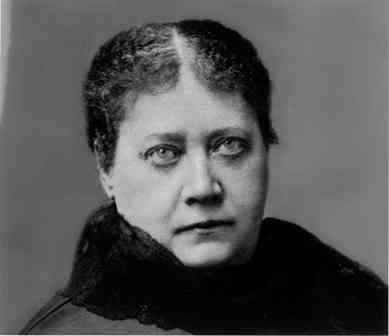
These days there are surely not many people left in the world who have read Madame Blavatsky's magnum opus, The Secret Doctrine from cover to bulky cover. Never an easy read, it has become increasingly impossible to comprehend, with its flowery Victorian prose and eccentric grammar. I have tried several times, but have never managed to get more than a couple of pages in before I become thoroughly confused. It wouldn't be the first great and important book to slide into obscurity, however.
Madame Blavatsky's star has faded somewhat, but the fact is that she was one of the most fascinating women of her own, or any other, time, and The Secret Doctrine was an enormously influential text. Indeed, it has probably had a much greater influence on the way we think and express ourselves today than most people would give it credit for.
Madame Blavatsky was the person behind the great influx of Eastern religious ideas into Western culture. Without the firm and slighly dictatorial guidance of Madame B, and the peculiar hodgepodge of Buddhism, Hinduism and Western Esotericism that is The Secret Doctrine, we would never have witnessed the popularity of Hindu gurus and Tibetan Buddhist masters that we are so familiar with today. Madame Blavatsky invented the New Age, and was singlehandedly responsible for making words and concepts like karma, Chakra and Lama the commonplaces they are today.
Henry Olcott, Madame B's great friend and co-founder of the Theosophical Society, was careful of the great lady's reputation after she died, but even he was puzzled as to how a poorly educated Russian emigrant was capable of producing a 2,068 page book. Like her, he credited the influence of her mythic "Masters" and, in his Old Diary Leaves, hinted that The Secret Doctrine had its provenance in more astral planes.
Reading The Secret Doctrine is really a commitment of years, and most Theosophical Societies around the world offer classes and study groups to help guide the confused. The more generous call The Secret Doctrine one of the world's great spiritual classics, on a par with the Bible and the Bhagavad Gita. I wouldn't quite heap such fulsome praise upon it, but one day I will read it in its entirety, and it really is the pioneer book of the modern world, filled as it is with orientalist imaginings and inspiring inunctions to evolve, grow and become more spiritual.








